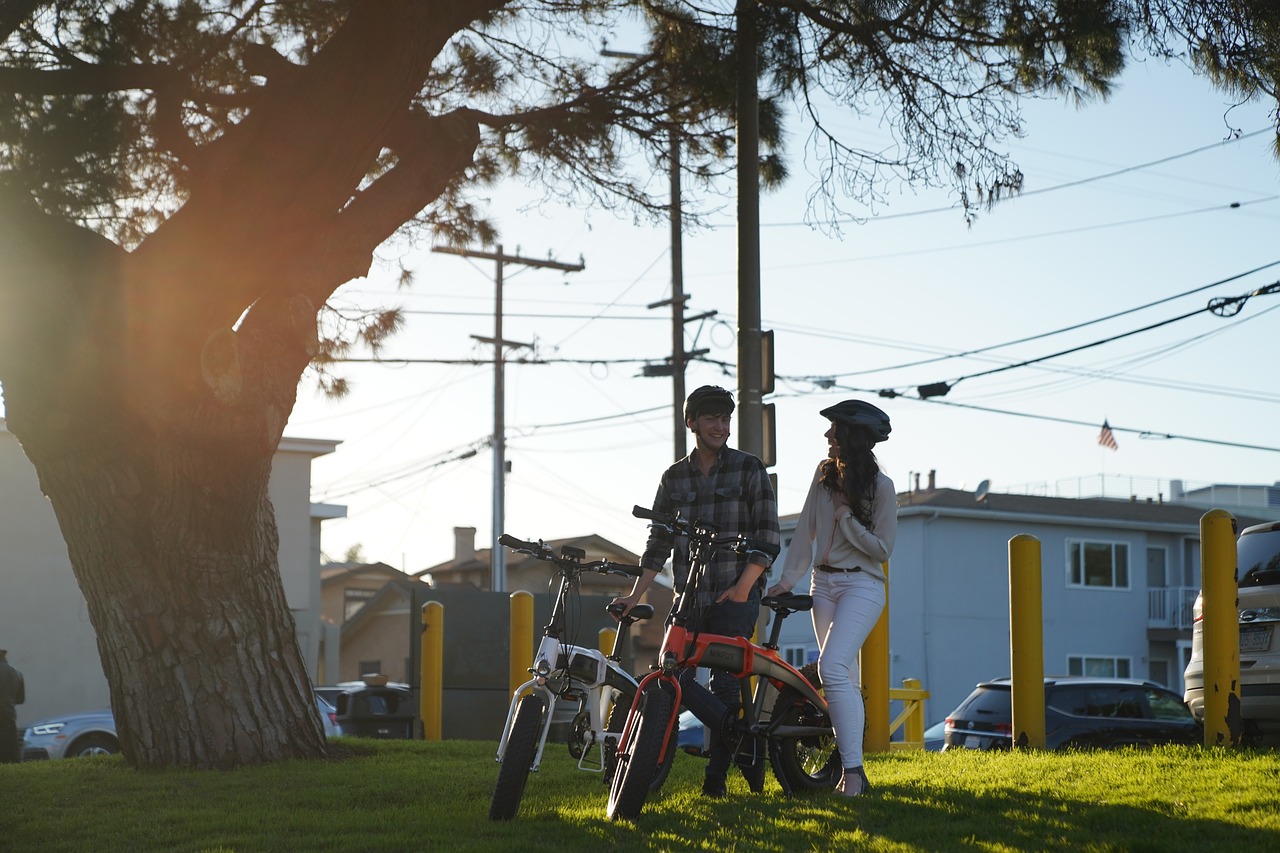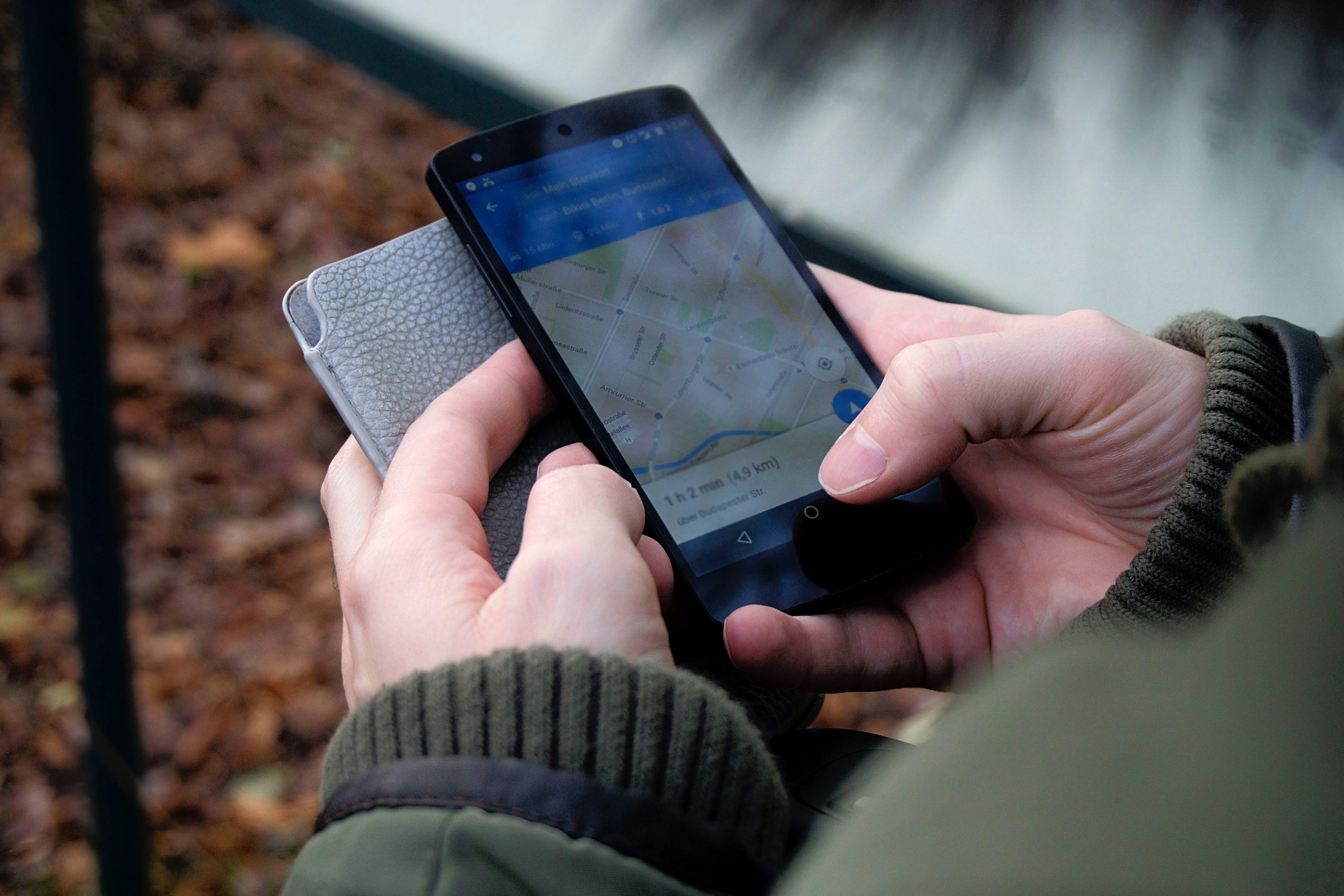
On-Demand Bike Taxi App Development: Complete Guide
On-demand cab booking apps have completely revolutionized urban commutes. They have efficiently bridged the gap between the affordability of buses or subways and the convenience of hired taxis. However, the recent trendsetter is the on-demand bike taxi app.
But what about some other instances, for example, meeting a friend for coffee?
Allow me to start with a story that has probably happened with almost everyone reading this article. I was catching up with an old pal over lunch after years of living in different cities. Unfortunately, I also had some really important errands to run as well. When I was done, it was almost time and I did not want to keep my friend waiting.
What to do? What could possibly be the fastest way to get from point A to point B without much of a hassle? This is where the on-demand bike taxi app comes in.
 If you have not heard of it, bike taxi apps are a two-wheeler version of your regular taxi apps. You can sign in, request a ride to a particular destination, get on the allocated bike and reach the place – just like you do it with Ola, Uber or Lyft. The apps can be standalone bike apps or a two-wheeler segment under an established four-wheeler taxi app – either way, they serve their purpose of being a faster and cheaper option.
If you have not heard of it, bike taxi apps are a two-wheeler version of your regular taxi apps. You can sign in, request a ride to a particular destination, get on the allocated bike and reach the place – just like you do it with Ola, Uber or Lyft. The apps can be standalone bike apps or a two-wheeler segment under an established four-wheeler taxi app – either way, they serve their purpose of being a faster and cheaper option.
Bike taxi services are all the rage right now around the world, especially in highly populated Asia-Pacific countries like India, Vietnam, Thailand, Indonesia, China, and Cambodia. Some of the names you must have heard are Rapido, Uber Moto, Ola Bike, Go-Jek, Grab, Baxi, Safeboda, etc. Many start-up companies are also going down this route because of its increasing popularity.
Now you must be wondering why we need a bike taxi service when there are already regular ones. Keep reading to get your question answered and all other details regarding the same.
Why There Is A Need For An On-Demand Bike Taxi App?
Bike taxi has already established itself as a necessary on-demand service. Although on a worldwide basis, two-wheelers occupy only around 20% of the entire on-demand taxi market share, they have a broad client base in Southeast Asia.
According to a report by Mordor Intelligence, the bike taxi market in the Asia Pacific is expected to have a 25% rise in CAGR by the year 2025. But these are only the facts and stats. Here are some of the more practical, real-life reasons behind why an on-demand bike taxi app is needed.
1. Faster Commute
Most cities of Asia-Pacific are known for their congested roads. Traffic jams take up nearly half the time in daily commutes, forcing people to leave early and still reaching late. Thus, getting from one place to another, especially during peak hours, can be quite a headache. Bikes have a better capacity of cutting through long traffics and navigating narrower streets easily. It allows in cutting the commute short and reaching the destination well within time.
 2. Short-distance Connectivity
2. Short-distance Connectivity
Many people take local trains or metros to their offices. But not everyone resides or works within a distance of 500 meters from a railway or metro station. Covering the distance between home/workplace and the stations can be a hard and frustrating thing to do every day. That is where bike taxi apps come in. Booking a bike for that distance will ensure you get a smooth, hassle-free ride instead of struggling on a public bus.
3. Affordability
If you are traveling solo and not carrying much baggage, a bike ride is simply the best way to get around – mostly because of how cheap it can be. An on-demand bike ride would cost 40-60 percent less than what a cab ride would cost for the same distance. For example, in Indian standards, Uber Moto will cost Rs. 50-60 for a particular distance, and for the same journey Uber Go will charge Rs. 150-200. Also, such apps have referral systems like Uber. So bike taxis end up being the cheaper, more affordable choice for passengers.
4. Convenience
Last but not the least, bike taxi apps will provide the same level of convenience to the users as four-wheeler taxi apps do. You will not have to wait for your transport, not face refusal from the drivers, or be charged exorbitantly for the ride.
Related read: Changing Face Of Public Transport Business In And Around The World
Bike taxi apps, just like most other transport apps, work on the basic principles – ride request with fare estimates confirmed ride with safety measures, authorized and background-checked drivers, easy payment, and feedback option.
Must-Have Features For A Bike Taxi App
For the app to function smoothly and successfully, all three aspects have to be top-notch and in complete sync with each other. Let’s take a look into the individual features each of them should have.
The main three pillars of bike taxi apps would be:
a) App for customer
b) App for admin
c) App for bike driver
Let’s move on to discuss them one by one:
 a) Customer App Features:
a) Customer App Features:
- Easy login – Customers should be able to register and login to their profiles easily with email ID, phone number or social media accounts.
- Customer profile dashboard – A complete customer dashboard is needed with trip history and payment setup.
- Maps – Proper embedding of maps for location visibility, assigning destination and source location pins, and live route tracking.
- Simple booking process – The steps for booking should not be a complicated one and should come with an estimated time of arrival and approximate fare for the distance.
- Quick confirmation – Customers should receive push notifications as well as SMS/email with a vehicle number, driver’s name, and the OTP if two-factor verification is enabled.
- Safety features – Being a bike taxi app service, you will have to keep in mind safety features like route sharing and SOS helpline.
- Seamless payment options – Customers should get flexibility in terms of payment methods, like cash, card, digital wallets such as Google Pay, PayPal, etc.
- Real-time alerts – Customers should be made aware of policy changes, rate alternation, or any new live offers via push notifications and SMS.
- Help and support – There needs to be a forum where customers can submit feedback, file complaints, and grievances, and get assistance from customer care executives.
 b) Admin App Features:
b) Admin App Features:
- Driver management – adding, deleting, and editing their profiles, managing reviews, conducting evaluation, assigning locations, managing payouts.
- Customer management – view booking statistics, answer to queries and grievances, take care of emergency situations.
- Fleet management – adding, deleting, and editing bike details, keeping track of their documentation, and insurance validity.
Related read: Coping Up With Fleet Management Industry Challenges? Digitise it!
- Fare management – the regulation system of fares according to location, traffic and hour, surcharge pricing, discounts, and coupon codes activation
c) Bike Driver App Features:
- Easy registration – The drivers should have an equally accessible dashboard as customers with simple uploading of personal details, scanned copies of driving license, vehicle document, insurance papers, etc.
- Going online/offline option – Drivers should be able to turn off their live status on the app as per their work hours.
- One tap booking confirmation – Confirmation of ride requests should be an easy one-tap procedure for convenience as well as to provide faster service to customers.
- GPS navigation – Providing GPS navigation in the driver’s app using Google Maps or Apple Maps is an absolute must for easy navigability through traffic.
- Start and end ride– Buttons are required to mark the start and end of a ride for the sake of work history record.
- Tracking of earnings – Drivers should be able to see their earnings per ride, additional commissions, and total monthly income on the app.
- Viewing customer reviews and ratings – Seeing the ratings and reviews given by customers will help them improve performance and work on etiquettes.
These are some of the crucial points to keep in mind for bike taxi app development. There are also other unique ways to set your app apart from the rest.
 For example:
For example:
- An option to break a trip for a quick errand.
- To include additional comments while booking the on-demand bike taxi app.
- The option to choose an e-scooter over normal ones if your fleet can cater to it.
These are some of the things that enrich the customer experience and in return, work wonders for your business. The agency you entrust with for the work might have more helpful points to add to the list.
Cost Estimation For Bike Taxi App
The overall cost to develop an on-demand bike taxi app will depend on a number of factors. Some of them would be:
1. Number Of Platforms
Your app can either be for any one platform, such as Android, iOS, web, and others, or for all of them. The cost will be determined by how many platforms you want to cover. Android and iOS are the most obvious ones, claiming 90% of the app market. However, the costs for each platform are separate and distinct as well. Android costs less than iOS but can be more complex to create due to several screen sizes.
 2. Size Of The Application
2. Size Of The Application
How big your app is has a direct impact on the estimated cost. Bigger the app, the higher the cost. But it also ends up helping with scalability.
3. Location
Your location as an entrepreneur or app developer plays into the total cost of the project. The per-hour cost of bike taxi app development on an average is lower in Asia than in the USA or Europe. In China and the Indian sub-continent, you will get the service at lower than $25 per hour, which is really affordable compared to the $70+ rates in the western countries.
4. Added Features
Special features added to the application will respectively increase the cost of bike taxi app development. Elements like real-time GPS tracking, trip sharing facilities, safety call features, two-step verification, etc. will hike up the cost by a few notches.
5. Continuous Upkeep
Like any other app, this too will need regular maintenance, bug fixing, tech support, and the likes. That will be an ongoing cost behind the app for your business.
Related read: Complete E Bike Sharing App Cost And Features
Important Technologies For Bike Taxi App
Advanced technology is obviously very important if you are to create and run a bike taxi service. To support the broad array of features in the three-pronged app as discussed under ‘Must-have features’, the following technologies are essential:
1. Location Tracking
This allows users to track customer locations even when they are not active on the app. This, of course, should require customer permission, otherwise, it is a breach of privacy. But once enabled, location tracking technology makes it easier to find nearby bikes within a few seconds and show the live status of the arriving vehicle to the user. There should also be an option for the user to share their live location to the driver over and above the pinned source location. This way, in the case of circumstantial situations, a driver can know exactly where the passenger is waiting.
 2. Built-In Map And Traffic Data
2. Built-In Map And Traffic Data
The standard of the map is extremely crucial for a transport app service. While map integration from Google or Apple is what most companies do, to set yourself apart, build your own mapping assets. For example, Uber has developed their own mapping asset over and above Google Maps by acquiring Microsoft’s Bing map and California-based start-up company deCarta. For iOS platforms, Apple has its own MapKit that should help to embed a full mapping interface.
3. Fare And Discount Calculation
A technology is needed to calculate the fare for every booking made and even share an estimate for the passenger before the booking is confirmed. The calculation formula will include a base fare, which is a flat fee for up to a certain distance, and then the cost per unit distance (mile/km) and per-minute basis will be added on top of that.
4. Payment Gateway
There has to be a payment system for those who wish to go cashless. It needs to have a ‘Card adding’ or ‘Digital wallet adding’ feature so that customers can carry out one-tap payments without having to bother with cash transactions after every ride.
In Conclusion
Bike taxi apps are believed by experts to be the next big splash in the traffic system. That is not to say that they can readily replace regular cab apps. We will always need the four-wheelers for
However, when it comes to short-distance trips or regular commute to the workplace or the nearby subway station, bike taxi apps will be an essential service.
If you have read all the way till here, then you surely have a great idea for a similar app. While bike taxi app development is not the easiest cakewalk out there, with the right help, it can be your big break in the world of business. The only thing you need to do is to invest your time and money for a robust bike taxi app solution.
You will get the time-tested services of experienced professionals at AllRide Apps, whose expertise in transport app-building is par excellence. So, get your vision transformed into reality right here under one roof.




